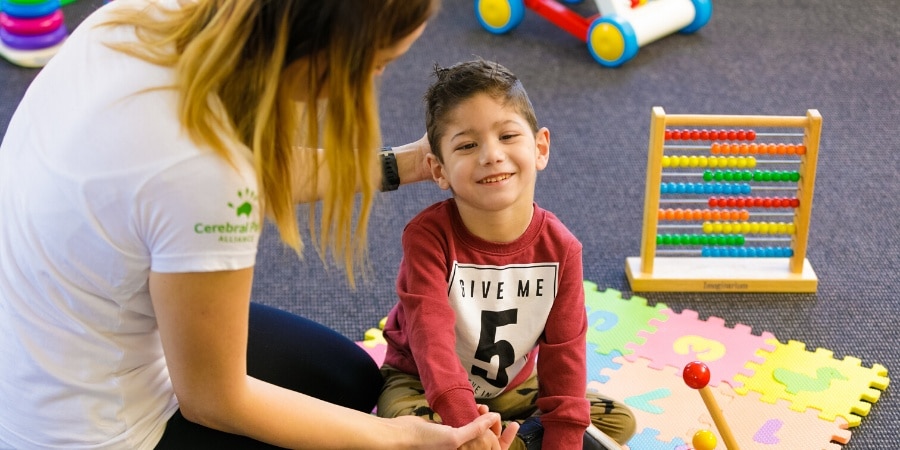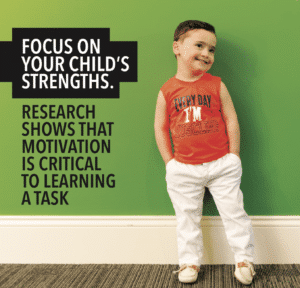
Written by Head of Research at Cerebral Palsy Alliance Research Institute, Dr Iona Novak and published in Source Kids on 12 December 2019
If your child has special needs, chances are you’ve heard the term ‘neuroplasticity’ at some point, perhaps while searching the web or at a therapy session.
It’s an intimidating word that screams science, but explained properly is actually quite easy to understand.
To bring you the most up to date information on this somewhat complex topic, we asked the Head of Research at Cerebral Palsy Alliance Research Institute, Dr Iona Novak to breakdown what neuroplasticity is, why it’s the secret ingredient in childhood development, and what parents with special needs kids can do to maximise their child’s neuroplasticity.
So, let’s dive in!
Put simply, neuroplasticity is the brain’s ability to change – to rewire, relearn and strengthen important connections.
When the brain is injured or grows abnormally, neurons are damaged, altered or lost causing disability. The good news is that the brain will attempt to create new pathways around an injury, or allow a healthy area of the brain to take over, or relearn how to do things by strengthening an existing healthy connection.
For example, someone with injury to one part of the brain can often recover, because neuroplasticity will allow the healthy section to assume the role of the injured section.
By harnessing neuroplasticity through practice and repetition, the brain will create and reinforce new neural pathways to learn new skills, habits and ways of thinking. Different methods and techniques can be used to access particular parts of the brain that require strengthening.
Every child is born with a staggering 100 billion neurons in their brain. That’s a galaxy worth of nerve cells ready to start exchanging electrical impulses and creating neural pathways.
While you’re never too old to learn, the first five years of life are critical for neurological development. During this time, the brain is developing at rapid speed making it the ideal time to harness neuroplasticity.
In the case of brain injury and neurological disability, the more specific the skill is that a person practises, the more likely they are to recover. To maximise the brain’s ability to adapt or rewire itself, research shows that getting access to intervention as early as possible will give a child the best chance of learning, regardless of the condition or diagnosis.
Early intervention can involve a number of therapies and treatments, delivered by a range of professionals including medical and allied health teams working collaboratively to reach goals and improve outcomes for a child.

When it comes to brain injury in babies and children, we know that to be successful, early intervention must:
• Be diagnostic specific (i.e. individualised to the child’s specific needs) to maximise a child’s potential.
• Minimise known complications that might interfere with learning.
• Focus on practising real-life skills (training in motor skills, cognitive skills, communication skills, reading skills, sleeping skills).
• Maximise learning opportunities in the home, preschool/school and other key environments
• Include parental support to reduce anxiety, stress and depression in parents.
Children with special needs have the best chance of flourishing when early intervention is delivered harnessing the principles of neuroplasticity.
Researchers Kleim and Jones1 have outlined ten principles that are proven to facilitate neuroplasticity in the therapy environment:

1. Use it or lose it: Children who do not regularly use and practise a skill can lose these skills and the brain function dedicated to these skills.
2. Use it and improve it: Training or specific practise will enhance a function.
3. Specificity: Practise of each skill must be very specific to induce plasticity. For example to learn to walk, the child must specifically practice walking, not just general movement skills.
4. Repetition matters: Sufficient repetition is required to induce plasticity, refinement of the skill and memory for how to perform the skill.
5. Intensity matters: Practising skills must occur regularly to induce plasticity. The frequency of the skill practised is very important for infants, who tire easily.
6. Time matters: Different forms of plasticity occur during different stages of the learning. For example, learning new knowledge about a task, refining execution and making the skill automatic so you can execute without even thinking about it
7. Motivation matters: If the tasks are motivating for the child more plasticity occurs.
8. Age matters: Plasticity occurs more readily in younger brains, as the younger brain is more open to possibilities.
9. Transference: Practising skills should occur in multiple environments, so that the child can learn to execute the task without you being present or with competing demands.
10. Interference: Plasticity can be for good or bad. For example if you have a bad habit it is hard to unlearn. It takes time and dedication to learn a new alternative habit.
You, as the parent, are the most important influence on your child’s development. Relationships are the foundation of your child’s development, together with nutrition, health, community, physical activity, stimulation and play. Here are some actions you can take today to advocate on your child’s behalf, maximise intervention and improve their learning and development:
1. Speak to your therapist about implementing the principles of neuroplasticity into your child’s therapy program.
2. Consider ways to increase how often your child practises skills by:
• Continuing learning at home, school or in the community while doing everyday activities.
• Undertaking an intensive therapy program that focuses on short, intense bursts of therapy to work on a specific set of goals.
3. Focus on your child’s strengths and motivations. Research shows that motivation is critical to practising and learning a task.
4. Get involved and partner with your therapy team so you can problem solve together and actively participate in your child’s intervention.
At CPA, we understand the importance of neuroplasticity and development in the
early years. And we know how to point each child’s neurons in the right direction through scientifically designed activities, and engaging learning experiences that help children become their best self.
Through our clinically backed early childhood intervention programs, and experience leading one of the world’s largest early intervention clinical trials to improve movement and cognition2, we provide science backed hope.
Visit our Early Childhood Intervention page today to find out more.
1Kleim, J. A., Jones, T. A. (2008). Principles of Experience-Dependent Neural Plasticity: Implications for Rehabilitation After Brain Damage. Journal of Speech, Language, and Hearing Research, Vol. 51, S225–S239, February 2008, D American Speech-Language-Hearing Association. 2Morgan, C., Novak, I., Dale, R. C., Guzzetta, A., & Badawi, N. (2016). Single blind randomised controlled trial of GAME (Goals. Activity. Motor Enrichment) in infants at high risk of cerebral palsy. Research in developmental disabilities, 55, 256-267.